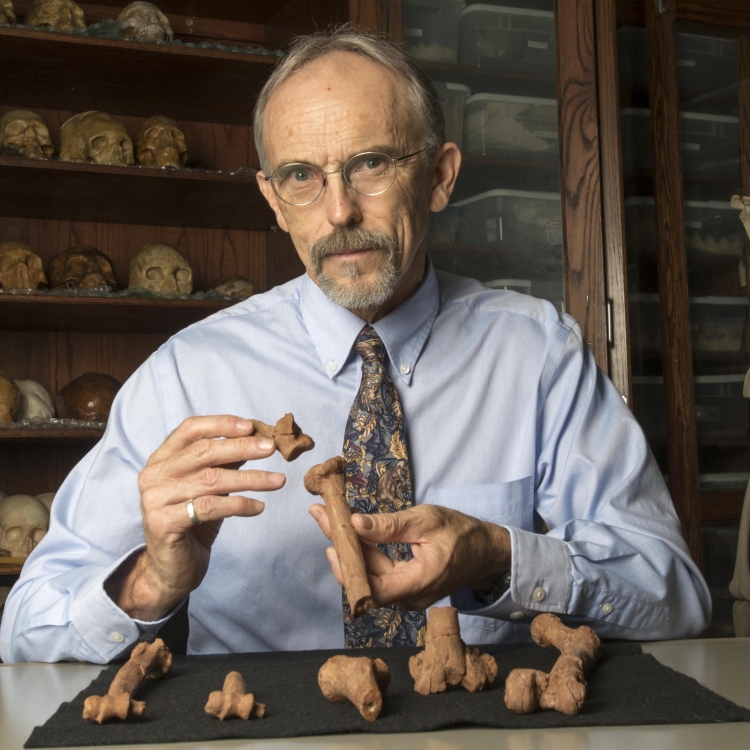
Solving a 3.2-Million-Year-Old Mystery: How Lucy Died
MARCH 24, 2017
Dr. John Kappelman
The University of Texas at Austin
What is the talk about?
Since its discovery in 1974, Lucy, a 3.2-million-year-old specimen of Australopithecus afarensis - or “southern ape of Afar” has provided invaluable information about human evolution. However, Lucy’s death has always remained a mystery. Over forty years after its discovery, Dr. Kappelman shares the remarkable story of how he studied Lucy’s bones along with his insights into how Lucy died, cracking one of the coldest cases in history. What do Lucy’s remains tell us about her life and death?
About our presenter

Dr. John Kappelman
Dr. John Kappelman is a Professor in the Departments of Anthropology and Geological Sciences at The University of Texas at Austin. His interests include the evolutionary history of primates and especially hominoid and hominin origins and evolution, with a research focus in paleoecology, functional morphology, sedimentology and stratigraphy, paleomagnetism, and computer imaging. Dr. Kappelman has conducted field work across Africa and Asia, with current projects on the Middle Stone Age of northwestern Ethiopia, Oligo-Miocene monkeys and hominoids of West Turkana, Kenya, and the geological history of the Ethiopian Plateau. Dr. Kappelman and his team have developed several websites including eSkeletons.org, eFossils.org, eAnthro.org, and eLucy.org. He directs the team studying the hires CT scans of the 3.2-million-year-old fossil “Lucy.” Dr. Kappelman’s degrees include a B.S. in Geology and Geophysics from Yale University, and an A.M. in Anthropology and a Ph.D. in Anthropology and Earth and Planetary Sciences, both from Harvard University.